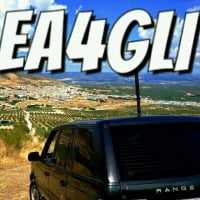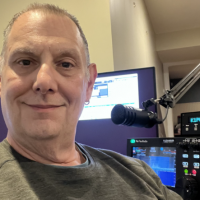SmartSDR v4.1.3 | SmartSDR v4.1.3 Release Notes
SmartSDR v3.10.15 | SmartSDR v3.10.15 Release Notes
The latest 4O3A Genius Product Software and Firmware
Need technical support from FlexRadio? It's as simple as Creating a HelpDesk ticket.
Question from a new ham on what to buy first TS990s or the bundled 6700+Maestro
Answers
-
My experience with several HRO salesmen. In California Stores is they they earn commissions on sales and will ALWAYS push Japanese radios. Obviously you must have run into a very effective HRO salesman who got youTo believe otherwise.0
-
One advantage of the '7300 and traditional radios is that you do not need to worry about software, operating systems, and PCs. (Maestro to the contrary notwithstanding.) On this site, we tend to downplay all that (we're all geeks, right?) but it is an issue for many ops.
0 -
Not about me Howard.0
-
It is a big advantage not having to rely on a computer to use a radio. That is why the 7300 type radios is the future, not pc based radios.0
-
It is a great advantage having a radio that can work ALL THE HAM BANDS (HF, VHF, UHF and SHF). That is why the TS-2000 is the future of radio, not HF only radios.
 0
0 -
The flexradio with a pc desktop or laptop computer is central to all my communications needs.
I can check out the radio bands.
I check spots for Dx .
I can monitor digtal modes.
Remote control of the radio and misc. hardware.
I check emails.
I have voip apps running.Logging contacts.
etc etc.
With software the more there is the more to experiment with un-limited possibilites with software.If you get along with computers Buy a Flexradio.
If you like things future proof buy a Flexradio.
If you want your radio control seperate buy the Maestro and the Flexradio.
73 Jeff My 2cts.
0 -
Back in 1992 I began rig. For an 18 month period of time I spent monthly trips to our and L electronics in Indianapolis to try out the three main competitors. I I evaluated there receive audio quality, filtering, transmit audio capabilities, and even more importantly the ergonomic layout of their control panels. The three rigs I examined were the ICOM IC-751, that Yaesu FT – 990, and the Kenwood TS 850 SAT. They were all similar in performance. But the Kenwood won out due to better dynamic range and a more contest worthy front panel. It was also an excellent CW rig.
I enjoyed that Kenwood 850 SAT for 20 happy years. But when I got the flex 6500, I sold the Kenwood with very few tears, because I was finally ready for the change, and had found my new favorite rig.
My best advice is to spend considerable time playing with a variety of new rigs, including the Kenwood 990, the 590 SG, comparable Yaesu brands, the Icom 7300, and the flex 6000 series. You will probably need to visit a ham station of a flex 6000 owner since they're not sold in stores. But only spending time with the various rigs, evaluating them according to your own individual needs will answer the question adequately.
Good luck and have fun. Take your time and enjoy the journey.
Ken - NM9P0 -
While I would definitely recommend the Flex over the Kenwood, I wouldn't recommend either for the beginning ham.
First thing at this time of the year, find a good field day site and go out and work the bands during Field Day. Most larger clubs will have a variety of radios and modes, you can go around and play with each of them. Look at the features that you use, those that you don't.
Not sure if you've gotten a VHF/UHF radio, but that's definitely needs to be a starting place as well.
A $10k radio is what most hams dream and work hard for. You can get quite spoiled by starting at the top of the line. There's generally a number of lessons to learn when you are starting out. And on HF, antennas are definitely one of them.
You also need to learn how you are going to use the radio. What are your other hobbies? Lots of activities on HF hiking the trails, Flex is a little unwieldy for the backpack. This year there is the NPOTA, a great use for mobile or portable radios. A $10k radio is a little more than people want to take portable.
There are many different facets of Amateur Radio, don't **** all your funds in one place. Digital HF, Digital VHF/UHF, D-STAR, DMR, Fusion, SSB, CW, Satellite, Back packing, repeaters, EME, Weak signal VHF/UHF, FM VHF/UHF, TV, slow scan, and probably a hundred more areas to have fun in.
Find a club, go to it. Find a Field day site, go to it. As someone suggested, this is a Flex site, so the general answer will always be Flex.
Get out, talk, play. Who know, you may find that the 6300 is good 'nuf for what you want :-)
Ed WA4YIH
3 -
Spot on! Great post Ed.0
-
It's easier to learn from all the senses including sight. Everything I learned or didn't know about receivers became 20-20 when I could SEE what I was receiving on my first Flex5000. SmartSDR has perhaps the best overall GUI that will just get better. I know there are many other radios that have GUI's and like many here in the community have operated or owned those radios. Buy a radio designed in Austin, Texas and manufactured in Austin, Texas where you have access to all of the players and a 30 day money back guarantee. Good luck Richard!!! And 73, Mike WB8CXO1
-
Hi Kevin,
My statement about digital modes is the Flex vs Kenwood's ability to do internal encoding/decoding of PSK and RTTY. While the 990 can internally decode both digital modes you cannot get the information out to a third party program. You would need a hardware interface. The Flex using its included DAX does not require the external hardware interface.
I brought this up as some have touted some radios capabilities to do internal encode/decode. It works but you cannot share the data with logging programs easily.
Dave wo2x
1 -
The waterfall/panadaptor sold me on to Flex (as well as many other things) as the rig to buy when returning to ham radio after a long break.
I would say that way too much has been made out of comparing rigs. Just because somebody else can chuck a Ferrari round corners does not mean that I could. It is the operator that makes the rig sing and not the other way around.
The problem with these things is that no matter how much one tries something out, it is only when living with then that the annoyances appear. Be they cameras, telescopes or XYLs. The thought process to buying a rig does not have to be overcomplicated.
The *main* point is how many times does one thinks they can splash out on expensive ham gear without getting divorced. If it is once, make the budget as big as you can. If you reckon that it is more than once, one can get a cheap rig and then work one's way up.
It is more about domestic politics than tech specs.
4 -
Yes. I found the internal RTTY decode on the 990 to be excellent. But I could not right click on the person's callsign and select call to have it populate the logbook and do a QRZ lookup.0
-
That's a function of HRD, is it not? Doesn't that just use cat? The literature indicates that does work.
0 -
On the surface, it would appear that Dave is correct Don't see anywhere in the command structure where you can access content of RTTY RECEIVE message. http://www.kenwood.com/i/products/info/amateur/pdf/ts_990_pc_command_e.pdf0
-
Yes, Howard is correct. You cannot get the decoded info out of the Kenwood to a third party program such as a logger. So, if you want to take advantage of the twin peak filter in RTTY mode on the Kenwood you have to manually type in the info to the logging program.
You can use the USB from the Kenwood to PC to get the audio into a digital program such as FLDigi or DM780 but the decode is not as good. It is a shame since Kenwood's internal RTTY decode is excellent.
Dave wo2x
0 -
Ah, I thought you meant as in HRD spots with a rtty filter. I was going to mention the programmatic interface too. Well, as it is software it is able to be changed while still living in the same hardware. You know, like regular updates.
0 -
(now that we've all given the OP five-times as much information and opinions than he can profitably absorb, I'll add my two cents ;-) When I became a new ham, my first rig was an SDR-1000 (the original Flex Radio). The advantage of an SDR with a big panadapter is that it allows you to SEE the spectrum. You don't turn a dial and tune into some mysterious signal (slowly, slowly, sounds funny, sounds less funny... sounds pretty good... sounds funny again, turn the dial back a bit). You can SEE what an USB SSB signal looks like. And how it looks different to an LSB SSB signal. And what CW signal looks like. And a PSK signal. You can see how close or spread-out signals are on the band. It gives you a visual reference, instead of forcing you to wander around in a dark room hoping to ****-into something interesting. So... IF you're computer literate and happy to use one as a major adjunct to your ham experience, then I'd strongly encourage you to get a Flex Radio. (Regarding the 6700 and the Maestro as a choice: You could probably do perfectly well with a 6500 and skip the Maestro for now, unless cost is no object. But a 6500 all by itself will give you plenty to play with as you learn the bands and make your first contacts. If, later, (hey... that could be a week, a month or a year later) get yourself a Maestro. If you want the extra features that a 6700 gives you, then upgrade to one. You'll have no trouble getting most of your money back on your 6500.) I *do* want to comment on the issue of whether the folks at HRO are a good source of unbiased advice on which radio to buy. It's VERY dependent on who you talk to. Some folks are knowledgeable on some products, but not other products. I visit several times a year (they're only 45 minutes away for me). The sales people vary GREATLY in terms of their knowledge about... well... anything. The vast majority of guys I encounter working there are not able to give great advice. Heck, in my experience it's not unusual for the sales people to not be able to OPERATE the radios on display. Also, as Howard mentioned, these guys are on commission... and like most normal people will prefer to sell you what they have (and, in fact, what they get an extra "incentive' on at the moment). Soooo... OP: There's yet another opinion. Get a Flex, see the band, and skip advice from parties who might have an agenda other than your happiness. Peter K1PGV3
-
I would not underestimate the great value that the 6300 represents. The 6500 is 75% more expensive than the 6300 in the UK from the dealer from which I bought my Flex. I will be happy with that rig until I go to the bottom of the food chain.
If you look at that sort of entry level rig entrance to the hobby, the 6300 wins hands down unless you are so minted the 6700 represents small change (no plane in your avatar LOL).
1
Leave a Comment
Categories
- All Categories
- 377 Community Topics
- 2.1K New Ideas
- 630 The Flea Market
- 8.2K Software
- 107 SmartSDR+
- 6.4K SmartSDR for Windows
- 183 SmartSDR for Maestro and M models
- 427 SmartSDR for Mac
- 271 SmartSDR for iOS
- 255 SmartSDR CAT
- 190 DAX
- 382 SmartSDR API
- 9.3K Radios and Accessories
- 36 Aurora
- 250 FLEX-8000 Signature Series
- 7.2K FLEX-6000 Signature Series
- 942 Maestro
- 55 FlexControl
- 865 FLEX Series (Legacy) Radios
- 919 Genius Products
- 461 Power Genius XL Amplifier
- 335 Tuner Genius XL
- 123 Antenna Genius
- 296 Shack Infrastructure
- 208 Networking
- 454 Remote Operation (SmartLink)
- 144 Contesting
- 784 Peripherals & Station Integration
- 139 Amateur Radio Interests
- 1K Third-Party Software





